- International edition
- Australia edition
- Europe edition


Skoda Octavia: car review
For 10 years, Skoda has been supplying the Tour de France with new cars. And no one has ever felt cheated
Price from £17,190 MPG up to 74.3 Top speed 136mph
Each year, driving on and around the Tour de France throws up new challenges for man and machine, beyond the imagination of factory testers. This year's ultimate car challenge came on Dutch Corner on the Alpe d'Huez , when a van was brought to a standstill by drunk fans dressed as carrots who "surfed" on the roof, while others rocked the vehicle to provide the "waves".
Team Sky 's car supplier Jaguar also found that the Tour throws up unlikely surprises. Theirs was an issue that could have proved costly. All teams carry massive coolboxes in the boot to keep their cyclists' drinking bottles cool. But when the valve at the bottom of Team Sky's box failed, the boot was flooded. This fused the battery, which disabled the car. The upshot was that on the Tour's toughest climb, Chris Froome didn't get fed and ended up with hypoglycaemia.
This year's test for the new Skoda Octavia , which I drove, was rather more mundane. The day after the race ended the key went missing. Eventually I found it in the mountain of washing that always has to be done on returning home after three weeks on the road. But I can conclusively reveal that Skoda's electronic fob can survive total immersion among sweaty journalistic undies – a full cycle after watching Froome cycle.
I first drove an Octavia on the Tour back in 2004, when Skoda began sponsoring the race. Then, I wrote, both Skoda and the Tour faced a challenge updating their respective pasts, the Tour trying to escape doping, Skoda looking to get away from those old jokes. Ten Tours later and Skoda wisecracks are a thing of the past; sadly for Froome, who faced continual questions over doping, the Tour has struggled to move on as rapidly in that area.

I also mentioned in 2004 that the Skoda was the "equivalent of Lance Armstrong" in its leanness and economy. This doesn't seem like the compliment it did back then, although it has to be said the 2013 Octavia remains a lean machine. Rather than dwell on miles per gallon, I prefer to look at it this way: a single tank of diesel took me from Burgundy to Bracknell. The latter may not be your first-choice destination but it's far enough to feel you haven't been cheated. This year's model has a more sophisticated feel. The automatic gearbox does some complex stuff that means, for economy reasons, it coasts out of gear on downgrades. This might get a bit terrifying descending the hairpins of Alpe d'Huez were it not for a clever device that means a dab on the footbrake tells the engine to get itself into gear and help with the braking.
The boot net to hold bottles of free wine has gone since 2004, sad to say, but it has been replaced by a secret underfloor compartment to fill up with gifts. Très James Bond. The rear cargo space is big enough for a racing bike, with the wheels out. One expects nothing less from the Tour's official car supplier.
There are some slightly fussy touches: the dashboard alert that tells you a passenger in the back seat has taken off their belt is a tad Big Brother, while the reminder to take your mobile phone with you is pure Aunty Mabel. After all, it's not like a Tour de France journalist to lose anything, is it? The key, lest we forget, is completely washproof.
- Tour de France
- Tour de France 2013
Comments (…)
Most viewed.
Specifications
New Additions
Browse by Make/Model/Type
Detailed Search Interface on the Home Page
All Makes in automobile-catalog
VIN Check , detailed car history by VIN
Other Skoda models:
Skoda Octavia Tour Combi 1.4 16V (man. 5) , manufactured or sold in 2010, version for Europe :
- manufactured by Skoda in Czech Republic
- 5-door wagon body type
- FWD (front-wheel drive), manual 5-speed gearbox
- gasoline (petrol) engine with displacement: 1390 cm3 / 84.8 cui, advertised power: 55 kW / 74 hp / 75 PS ( ECE ), torque: 126 Nm / 93 lb-ft, more data: 2010 Skoda Octavia Tour Combi 1.4 16V (man. 5) Horsepower/Torque Curve
- characteristic dimensions: outside length: 4513 mm / 177.7 in, width: 1731 mm / 68.1 in, wheelbase: 2512 mm / 98.9 in
- reference weights: base curb weight: 1245 kg / 2745 lbs, gross weight GVWR: 1770 kg / 3902 lbs, more data: 2010 Skoda Octavia Tour Combi 1.4 16V (man. 5) Specifications Review
- how fast is this car ? top speed: 171 km/h (106 mph) (declared by factory);
- accelerations: 0- 60 mph 14.6© s, 0- 100 km/h 15.5 s (declared by factory), 1/4 mile drag time (402 m) 19.9© s (simulation ©automobile-catalog.com), more data: 2010 Skoda Octavia Tour Combi 1.4 16V (man. 5) Performance Review
- fuel consumption and mileage: 6.8 l/100km / 41.5 mpg (imp.) / 34.6 mpg (U.S.) / 14.7 km/l EU-cycle; emission: 163 gCO2/km; average estimated by a-c©: 8.5 l/100km / 33.4 mpg (imp.) / 27.8 mpg (U.S.) / 11.8 km/l, more data: 2010 Skoda Octavia Tour Combi 1.4 16V (man. 5) Specifications Review
For the table with this car full photo gallery and complete technical specifications (including final drive and gear ratios, powertrain description, inside and outside dimensions etc.), full performance and economy data, or to compare up to 5 cars side-by-side - click one of the the buttons below:

Skoda Octavia Tour Combi 1.6 (man. 5) , manufactured or sold in 2010, version for Europe :
- gasoline (petrol) engine with displacement: 1595 cm3 / 97.5 cui, advertised power: 75 kW / 101 hp / 102 PS ( ECE ), torque: 148 Nm / 109 lb-ft, more data: 2010 Skoda Octavia Tour Combi 1.6 (man. 5) Horsepower/Torque Curve
- reference weights: base curb weight: 1275 kg / 2811 lbs, gross weight GVWR: 1805 kg / 3979 lbs, more data: 2010 Skoda Octavia Tour Combi 1.6 (man. 5) Specifications Review
- how fast is this car ? top speed: 190 km/h (118 mph) (declared by factory);
- accelerations: 0- 60 mph 11.2© s, 0- 100 km/h 11.9 s (declared by factory), 1/4 mile drag time (402 m) 18.6© s (simulation ©automobile-catalog.com), more data: 2010 Skoda Octavia Tour Combi 1.6 (man. 5) Performance Review
- fuel consumption and mileage: 7.1 l/100km / 39.8 mpg (imp.) / 33.1 mpg (U.S.) / 14.1 km/l EU-cycle; emission: 169 gCO2/km; average estimated by a-c©: 9.2 l/100km / 30.7 mpg (imp.) / 25.5 mpg (U.S.) / 10.9 km/l, more data: 2010 Skoda Octavia Tour Combi 1.6 (man. 5) Specifications Review

Skoda Octavia Tour Combi 1.8 20V Turbo (man. 5) , manufactured or sold in 2010, version for Europe :
- gasoline (petrol) engine with displacement: 1781 cm3 / 108.7 cui, advertised power: 110 kW / 148 hp / 150 PS ( ECE ), torque: 210 Nm / 155 lb-ft, more data: 2010 Skoda Octavia Tour Combi 1.8 20V Turbo (man. 5) Horsepower/Torque Curve
- reference weights: base curb weight: 1330 kg / 2932 lbs, gross weight GVWR: 1865 kg / 4112 lbs, more data: 2010 Skoda Octavia Tour Combi 1.8 20V Turbo (man. 5) Specifications Review
- how fast is this car ? top speed: 219 km/h (136 mph) (declared by factory);
- accelerations: 0- 60 mph 8© s, 0- 100 km/h 8.5 s (declared by factory), 1/4 mile drag time (402 m) 16.7© s (simulation ©automobile-catalog.com), more data: 2010 Skoda Octavia Tour Combi 1.8 20V Turbo (man. 5) Performance Review
- fuel consumption and mileage: 7.9 l/100km / 35.8 mpg (imp.) / 29.7 mpg (U.S.) / 12.7 km/l EU-cycle; emission: 189 gCO2/km; average estimated by a-c©: 9.2 l/100km / 30.6 mpg (imp.) / 25.4 mpg (U.S.) / 10.8 km/l, more data: 2010 Skoda Octavia Tour Combi 1.8 20V Turbo (man. 5) Specifications Review

Skoda Octavia Tour Combi 1.9 TDI (100) (man. 5) , manufactured or sold in 2010, version for Europe :
- diesel fuel engine with displacement: 1896 cm3 / 115.7 cui, advertised power: 74 kW / 99 hp / 101 PS ( ECE ), torque: 240 Nm / 177 lb-ft, more data: 2010 Skoda Octavia Tour Combi 1.9 TDI (100) (man. 5) Horsepower/Torque Curve
- reference weights: base curb weight: 1340 kg / 2954 lbs, gross weight GVWR: 1865 kg / 4112 lbs, more data: 2010 Skoda Octavia Tour Combi 1.9 TDI (100) (man. 5) Specifications Review
- how fast is this car ? top speed: 189 km/h (117 mph) (declared by factory);
- accelerations: 0- 60 mph 11.2© s, 0- 100 km/h 11.9 s (declared by factory), 1/4 mile drag time (402 m) 18.1© s (simulation ©automobile-catalog.com), more data: 2010 Skoda Octavia Tour Combi 1.9 TDI (100) (man. 5) Performance Review
- fuel consumption and mileage: 5.1 l/100km / 55.4 mpg (imp.) / 46.1 mpg (U.S.) / 19.6 km/l EU-cycle; emission: 135 gCO2/km; average estimated by a-c©: 6.4 l/100km / 44.3 mpg (imp.) / 36.9 mpg (U.S.) / 15.7 km/l, more data: 2010 Skoda Octavia Tour Combi 1.9 TDI (100) (man. 5) Specifications Review
2010 Skoda Octavia 1st-gen. Tour Combi (Wagon)
Analogous models manufactured in the same time period:
(click on the car to proceed to datapage)
All years same class and body style Skoda cars:
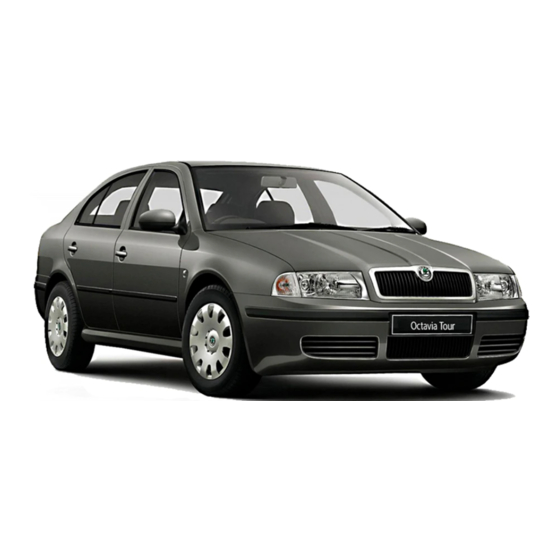
- Skoda Manuals
- OCTAVIA TOUR -
- Owner's manual
Skoda Octavia Tour Owner's Manual
- Owner's manual (224 pages)
- Brochure (7 pages)
- Owner's manual (183 pages)
- page of 207 Go / 207
Table of Contents
Layout of this owner's manual (explanations), using the system.
- Basic Functions and Important Information
- Overview of the Instrument Cluster
- Engine Revolutions Counter
- Coolant Temperature Gauge
- Speedometer
- Counter for Distance Driven
- Service Interval Display
- Digital Clock
- Multi-Functional Indicator (Onboard Computer)
- Information Display
- Auto Check Control
- Warning Lights
- Changing the Battery of the Radio Remote Control
- Electronic Immobiliser
- Child Safety Lock
- Central Locking System
- Remote Control
- Synchronisation of the Remote Control
- Anti-Theft Alarm System
- Power Windows
- Electric Sliding/Tilting Roof
- Instrument Lighting
- Interior Lighting
- Windshield Wiper and Wash System
- Exterior Mirror
- Rear-View Mirror
- Front Seats
- Adjusting Front Seats Electrically
- Head Restraints
- Luggage Compartment
- Net Partition (Combi)
- The Roof Rack
- Note Holder
- Cigarette Lighter*, Power Sockets
- Storage Compartments
- Air Outlet Vents
- Air Conditioning System
- Climatronic* (Automatic Air Conditioning)
- Operational Problems
- Setting Steering Wheel Position
- Ignition Lock
- Starting the Engine
- Switching off the Engine
- Rear Parking Aid
- Cruise Control System (CCS)
- Mobile Phone, Handsfree-System
- Mobile Phones and Two-Way Radio Systems
- Basic Information
- Correct Seated Position
- Why Seat Belts
- The Physical Principle of a Frontal Collision
- Important Safety Information Regarding the Use of Seat Belts
- How Are Seat Belts Correctly Fastened
- Belt Tensioners
- Description of the Airbag System
- Front Airbags
- Side Airbags
- Deactivating an Airbag
- What You Should Know about Transporting Children
- Attaching a Child Seat Using the "ISOFIX" System
Driving Tips
- Electronic Stability Programme (ESP)
- Brake Booster
- Antilock Brake System (ABS)
- Brake Assist
- The First 1 500 Kilometres and then Afterwards
- Catalytic Converter
- Driving in an Economical and Environmentally Conscious Manner
- Environmental Compatibility
- Motoring Abroad
- Avoiding Damage to Your Vehicle
- Detachable Towing Device
General Maintenance
- Care of the Exterior of Vehicle
- Underbody Protection
- Care of the Interior of Vehicle
- Engine Compartment
- Cooling System
- Brake Fluid
- Windshield Washer System
- Accessories and Replacement Parts
- Technical Changes
- Vehicles of Category N1
Breakdown Assistance
- First-Aid Box*, Warning Triangle* and Bulb Set
- Fire Extinguisher
- Vehicle Tool Kit
- Spray for Repairing a Tyre
- Tyre Repair Kit
- Spare Wheel
- Changing a Wheel
- Jump-Starting
- Tow-Starting and Towing Vehicle
- Electric Fuses
Technical Data
- General Information
- Used Abbreviations
- Performances
- Identification Details
- Fuel Consumption According to the ECE Standards and EU Guidelines
- Ltr./55 Kw - EU4
- Ltr./75 Kw - EU4/EU2 DDK
- Ltr./110 Kw - EU4/EU3D
- 1.9 Ltr./74 Kw TDI PD - EU4
- Octavia - Vehicles of the Group N1
- Octavia Combi - Vehicles of the Group N1
Advertisement
Quick Links
- 2 Warning Lights
- Download this manual
Related Manuals for Skoda Octavia Tour

Summary of Contents for Skoda Octavia Tour
- Page 1 SIMPLY CLE VER ŠkodaOctavia Tour OWNER‘S MANUAL...
- Page 2 Introduction You have opted for a Škoda - our sincere thanks for your confidence in us. Your new Škoda offers you a vehicle featuring the most modern engineering and a wide range of equipment which you will undoubtedly wish to use to the full during your daily motoring. That is why, we recommend that you read this Owner's Manual attentively to enable you to become familiar with your car and all that it offers as quickly as possible.
- Page 3 Introduction On-board literature Vehicle data; The on-board literature for your vehicle consists of this “Owner's Manual” Service intervals; as well as the “Quick Reference Guide”, “Service Schedule” and “Help on Overview of the service work; the road”. There can also be a variety of other additional operating manuals ...
Page 4: Table Of Contents
- Page 5 Contents Breakdown assistance Driving and the Environment ....... The first 1 500 kilometres and then afterwards . . Breakdown assistance .
- Page 6 Contents Using the system Safety Driving Tips General Maintenance Breakdown assistance Technical Data...
Page 7: Layout Of This Owner's Manual (Explanations)
Page 8: using the system.
- Page 9 Cockpit Fig. 1 Certain items of equipment shown in the illustration are only fitted to particular model versions or are optional items of equipment.
Page 10: Cockpit
Page 11: quick reference guide.
- Page 12 Quick Reference Guide Adjusting the front seats WARNING (continued) You must not adjust the steering wheel when the vehicle is moving! For safety reasons the lever must always be firmly pushed up to avoid the steering wheel altering its position unintentionally when driving - risk of accident! Seat belt height adjuster Fig.
- Page 13 Quick Reference Guide Electric exterior mirror adjustment* Switching lights on and off Fig. 7 Inner part of door: Rotary knob Fig. 8 Dash panel: Light switch Heating of the external mirror Switching off all lights Adjusting left and right exterior mirrors simultaneously Switching on side lights ...
- Page 14 Quick Reference Guide Power windows* Turn signal light right Turn signal light left Switching over between low beam and main beam lights Headlight flasher Further information page 49, “The turn signal and main beam lever ”. Windscreen wiper lever Fig.
- Page 15 Quick Reference Guide Bonnet remote release Fig. 13 Fuel filler flap with cap unscrewed Opening the fuel filler cap Fig. 14 Bonnet release lever – Open the fuel filler flap with the hand. fig. – Pull the unlocking lever below the dash panel on the driver's side –...
- Page 16 Quick Reference Guide Engine oil must be refilled. Further information page 150, “Check engine oil level”. Fig. 16 Securing the bonnet with the bonnet support – Grip with the hand under the radiator grille and lift up the bonnet. ...
Page 17: Instruments And Warning Lights
Page 18: fuel gauge, page 19: service interval display, page 20: digital clock.
- Page 21 Instruments and warning lights The data of the single-trip memory (memory 1) is shown if a 1 appears in the display. The rocker switch and the button are located on the windshield wiper lever fig. A 2 shown in the display means that data relates to the total distance memory (memory 2).
- Page 22 Instruments and warning lights Range slightly higher than the actual outside temperature because of heat radiated by the engine. The estimated range in kilometres is shown on the display. It indicates the distance you If the outside temperature drops below +4°C, a snow flake symbol (warning signal for can still drive with your vehicle based on the present level of fuel in the tank for the ice on the road) appears behind the temperature indicator and a warning signal same style of driving.
Page 23: Information Display
Page 24: auto check control.
- Page 25 Instruments and warning lights The red symbols indicate danger (priority 1) while the yellow symbols indicate a page 31 warning (priortity 2). Information for the driver may also appear in addition to the Faults in the brake surface symbols ...
Page 26: Warning Lights
- Page 27 Instruments and warning lights Note page 29 Brake pad wear* Arrangement of the indicator lights depends on the model and model version. The symbols shown in the following functional description are to be found as indicator ...
- Page 28 Instruments and warning lights Fog lights ment system selects an emergency programme which enables you to drive to the nearest specialist garage by adopting a gentle style of driving. The warning light comes on when the fog lights are operating. The following text will be displayed in the information display*: EMISSIONS WORKSHOP! Rear fog light...
- Page 29 Instruments and warning lights Airbag system Coolant temperature/coolant level Monitoring the airbag system The warning light comes on for a few seconds when the ignition is switched on. The warning light comes on for a few seconds when the ignition is switched on. The coolant temperature is too high or the coolant level too low if the warning light ...
- Page 30 Instruments and warning lights Engine oil WARNING (continued) The warning light lights up red (low oil pressure) Do not touch the coolant fan The coolant fan may switch on automatically even if the ignition is off. The warning light comes on for a few seconds when the ignition is switched on Stop the vehicle and switch the engine off if the warning light does not go off within Thickness of the brake pads* ...
- Page 31 Instruments and warning lights In this case have the engine inspected without delay by a specialist garage. of the fault in the meantime since you will not know the extent of the fault and in how far the effect of the antilock brakes is affected. The following text will be displayed in the information display*: Further information about ABS ...
- Page 32 Instruments and warning lights Traction control system (TCS)* Note If the battery has been disconnected and reconnected, the warning light comes on The warning light comes on for a few seconds when the ignition is switched on. after switching on the ignition.
- Page 33 Instruments and warning lights Handbrake applied The warning light also comes on if the handbrake is applied. An audible warning is also given if you drive the vehicle for at least 3 seconds at a speed of more than 5 km/h. The following text will be displayed in the information display*: HANDBRAKE ON WARNING...
Page 34: Unlocking And Locking
Page 35: changing the battery of the radio remote control, page 36: child safety lock.
- Page 37 Unlocking and locking Safe securing All the securing knobs move downwards when locking. If this is not the case, the rele- vant door must be opened once again and properly closed. The central locking system is equipped with a safe securing system. Locking the The warning light flashes in the driver door, next to the securing knob, to confirm that vehicle from the outside causes the door locks to be automatically blocked.
- Page 38 Unlocking and locking Unlocking the vehicle using the key Locking the vehicle with the key – Turn the key in the locking cylinder of the driver's door to the right in the lock posi- fig. tion All the doors and the boot lid are locked. ...
- Page 39 Unlocking and locking Unlocking all doors and the boot lid Boot lid page 37, fig. – Press button 33. The symbol goes out in the button. The following applies if you have locked your vehicle using the button ...
Page 40: Remote Control
Page 41: synchronisation of the remote control, page 42: power windows.
- Page 43 Unlocking and locking Closing a window WARNING – Lightly press the appropriate button up and hold it until the window has moved If you lock the vehicle from the outside, do not leave any person in the into the desired position. vehicle since it is no longer possible to open the windows from the inside in an emergency.
- Page 44 Unlocking and locking Window convenience operation Hold the key in the locking cylinder of the driver's door in the lock position until all the windows are closed, You can open and close the electrically powered windows as follows when unlocking Release the key, and locking the vehicle (only close the sliding/tilting roof): ...
Page 45: Electric Sliding/Tilting Roof
- Page 46 Unlocking and locking Convenience operation You can close and/or open the sliding/tilting roof by hand if the system is defect. – Position the flat blade of a screwdriver carefully against the rear edge of the cover You can also close an open sliding/tilting roof from the outside. of the electrical drive.
Page 47: Lights And Visibility
Page 48: instrument lighting.
- Page 49 Lights and Visibility Headlamp range adjustment Switch for hazard warning lights Once the low beam is switched on you can then adapt the range of the headlights to the load of the vehicle. Fig. 44 Dash panel: Switch for hazard warning lights Fig.
- Page 50 Lights and Visibility The turn signal and main beam lever Parking light – Switch off the ignition. The parking lights and headlight flasher are also switched on and off using the turn signal and main beam lever. –...
Page 51: Interior Lighting
Page 52: visibility, page 53: windshield wiper and wash system.
- Page 54 Lights and Visibility Taking off the wiper blade The windscreen washer nozzles for the windscreen are heated* when the ignition is switched on. – Fold windscreen wiper arm out from the windscreen and position the wiper blade Top up with wash liquid page 159. at right angles to the wiper arm ...
Page 55: Exterior Mirror
- Page 56 Lights and Visibility Position R Operating the right mirror. WARNING Convex (curved outward) or spherical (differently curved) exterior mirrors increase the vision field. They do, however, make objects appear smaller in the mirror. These mirrors are only of limited use, therefore, for estimating distances to the following vehicles.
Page 57: Seats And Storage
Page 58: adjusting front seats electrically.
- Page 59 Seats and Storage Storing setting Memory buttons Memory for the seat offers the possibility to store the individual driver seat and external mirror position. An individual position can be allocated to each of the three page 58, fig. memory buttons 56, that is three in total.
Page 60: Head Restraints
Page 61: rear seats.
- Page 62 Seats and Storage Move seats into the initial position seats and the armrest in such a way that no mutual deformation or damage can occur to the seats. – Install the head restraints in the slightly lifted seat backrest. fig. 61 –...
Page 63: Pedals
Page 64: luggage compartment.
- Page 65 Seats and Storage Lashing eyes WARNING (continued) If the items of luggage or objects are attached to the lashing eyes with unsuitable or damaged lashing straps, injuries can occur in the event of braking manoeuvres or accidents. In order to prevent the items of luggage being thrown forward, always use suitable lashing straps which are firmly attached to the lashing eyes.
- Page 66 Seats and Storage fig. 68 The fixing net and the installation instruction are located in a container under the floor Fixing examples of the fixing net as double vertical pocket and floor net fig. covering of the luggage compartment behind the spare wheel. The fixing net and the installation instruction are located in a container under the floor WARNING covering of the luggage compartment behind the spare wheel.
- Page 67 Seats and Storage Luggage compartment cover (Octavia) Note You can use the luggage compartment cover behind the head Opening the tailgate also lifts up the luggage compartment cover. restraints for storing light and soft items. Foldable luggage compartment cover (Combi) Fig.
- Page 68 Seats and Storage Removing the variable loading floor Caution – Unlock the loading floor by turning the locking bolts by approx. 90° to the left Please ensure that the heating elements of the rear window heater and the foldable fig. luggage compartment cover are not damaged as a result of objects placed in this area.
Page 69: Net Partition (Combi)
- Page 70 Seats and Storage WARNING (continued) First check for yourself that the cross road is inserted into the mounts the front position! Removing and installing net partition housing Fig. 78 Roll up net partition Pulling out – Fold the rear seats forwards page 60 ...
Page 71: The Roof Rack
Page 72: note holder, page 73: ashtray, page 74: cigarette lighter*, power sockets, page 75: storage compartments.
- Page 76 Seats and Storage Storage compartment for spectacles* Front seat armrest with storage compartment* Fig. 89 Centre console: Storage Fig. 90 Armrest: Storage compartment for spectacles compartment Opening and closing the storage compartment for spectacles The armrest is adjustable in height. –...
- Page 77 Seats and Storage Rear seat armrest with storage compartment* Clothes hooks* Fig. 91 Rear seats: Armrest Fig. 93 Rear door: Clothes hooks fig. A clothes hook is located above the rear doors WARNING Ensure that any clothes hanging from the hooks do not impair your vision to the rear.
Page 78: Heating And Air Conditioning System
- Page 79 Heating and air conditioning system The air inlet in front of the windscreen must be free of ice, snow or leaves in order to WARNING (continued) ensure that the heating and ventilation systems operate properly. increases. Switch recirculated air mode off as soon as the windows begin The heating effect is dependent upon the coolant temperature, thus full heat output misting up.
Page 80: Air Conditioning System
- Page 81 Heating and air conditioning system – IF you wish to close the inlet for fresh air, use the switch - Recirculated air WARNING (continued) mode page 82. increases. Switch recirculated air mode off as soon as the windows begin Control for air distribution misting up.
- Page 82 Heating and air conditioning system Setting air conditioning system Recommended settings of the control elements of the air conditioning system for the respective operating modes: Setting of the control dial Button Setup Air outlet vents 3 Air outlet vents 4 Defrosting the windscreen To the right up to Open and align with the...
Page 83: Climatronic* (Automatic Air Conditioning)
- Page 84 Heating and air conditioning system The AC compressor is switched off at a high coolant temperature in order to provide during the cold season of the year - in order to avoid such odours. Also open a window cooling at a high load of the engine. for a short time.
- Page 85 Heating and air conditioning system Defrosting the windscreen – Press the button - the warning light lights up in the button. AUTO Recirculated air mode The automatic mode is switched off by pressing the button for the air distribution or Direction of air flow increasing or decreasing the blower speed.
- Page 86 Heating and air conditioning system Defrosting windscreen - switching off You can set the interior temperature between +18°C (64°F) and +29°C (84 °F). The interior temperature is regulated automatically within this range. If you select the – Once again press the button or the button AUTO ...
Page 87: Operational Problems
Page 88: starting-off and driving, page 89: starting the engine, page 90: switching off the engine, page 91: shifting, page 92: rear parking aid, page 93: cruise control system (ccs).
- Page 94 Starting-off and Driving After releasing the rocker button from the SET position, the speed you have stored – If you release the rocker button when the vehicle is travelling at a speed of less than (above 30 km/hour 20 mph) is maintained at a constant speed without having to 30 km/h, the speed is not stored, the memory is erased.
Page 95: Communication
- Page 96 Communication It is essential that you inform a specialist garage about the possibilites to assemble and operate mobile phones and two-way radio sets which have a power output of more than 10 W. They will inform you which technical possibilities exist for retrofitting mobile telephones and radio transmitters.
- Page 97 Communication...
Page 98: Safety
Page 99: correct seated position.
- Page 100 Passive Safety Correct seated position for the front passenger Adjust the seat backrest so that you are able to reach the highest point of the steering wheel with your arms at a slight angle. The front passenger must maintain a distance of at least 25°cm from ...
- Page 101 Passive Safety Examples of an incorrect seated position WARNING (continued) An incorrect seated position can lead to severe injuries or death for the The seat backrests must not be angled too far back when driving otherwise occupants. this will affect proper operation of the seat belts and of the airbag system - risk of injury! Seat belts offer their optimum protection only if the webbing of the seat belts is prop- erly routed.
- Page 102 Passive Safety WARNING If the occupant adopts an incorrect seated position, he is exposed to life- threatening injuries, in case he is hit by a deployed airbag. Before setting off, please adopt the correct seated position and do not change this seated position while the car is moving.
Page 103: Seat Belts
Page 104: the physical principle of a frontal collision, page 105: how are seat belts correctly fastened.
- Page 106 Seat belts Seat belt height adjuster – Slowly pull the belt webbing at the tongue of the lock over your chest and pelvis – Insert the tongue of the lock into the seat belt buckle belonging to the seat until it is heard to lock in place.
- Page 107 Seat belts Taking seat belts off Switching child safety lock on – Attach the child safety seat with the three-point seat belt (self-retracting) as stated in the manufacturer's instructions. – Reel up the shoulder part of the belt completely. When the belt is reeled up, this can be detected by a “clicking”...
Page 108: Belt Tensioners
Page 109: airbag system, page 110: front airbags.
- Page 111 Airbag system fig. compartment 118. The installation positions are each marked with the The airbag system is designed in such a way that the driver and the front passenger “AIRBAG” logo. airbag* are deployed in the event of a frontal collision of major severity. The front airbag system, in combination with three-point safety belts, offers additional In certain accident situations, the front and side airbags may be deployed together.
Page 112: Side Airbags
- Page 113 Airbag system Function of the side airbags WARNING (continued) Risk of injury to the upper part of the body is reduced by fully inflated child is seated with its back facing in direction of travel (in some countries also side airbags. when the child is facing the direction of travel) ...
Page 114: Deactivating An Airbag
- Page 115 Airbag system In cases where the front passenger airbag and also possibly the side airbag* are switched off, the indicator light comes on about 4 seconds after the ignition is switched on. There is a system fault present in the airbag switch off if the indicator light flashes.
Page 116: Transporting Children Safely
- Page 117 Transporting children safely We recommend, for safety reasons, that you always mount a child restraint systems on WARNING (continued) the rear seats whenever possible. If you still decide, however, to use a child safety seat passenger seat if the airbag system deploys in the event of an accident. This can on the front passenger seat then you must pay attention to the following warnings in result in severe or even fatal injuries.
- Page 118 Transporting children safely The side airbags are inflated in fractions of a second in order to be able to provide this WARNING (continued) protection page 112, “Function of the side airbags”. If this is not done, a child seated on the front passenger seat may suffer An airbag inflating develops such a strong force that an occupant who has not adopted severe or even fatal injuries if the front passenger airbag or airbags are an upright seated position may suffer injuries from the airbag or as a result of objects...
Page 119: Child Seat
- Page 120 Transporting children safely travel. It is best for children in the upper range of the Group 0+, to use a child seat WARNING fig. 129 which allows the child to sit in the direction of travel. It is essential to always switch off the front passenger airbag (airbags) when Child safety seats in which the child is seated with its back facing the direction of travel, attaching in exceptional circumstances a child safety seat on the front must not be used on the front passenger seat ...
- Page 121 Transporting children safely Child safety seats in Group 2 Child safety seats in Group 3 Fig. 130 Child seat in Group 2 Fig. 131 Child seat in Group 3 installed on the rear seat facing installed on the rear seat facing the direction of travel the direction of travel For children up to about 7 years of age weighing between 15 and 25 kg the optimal...
Page 122: Attaching A Child Seat Using The "Isofix" System
- Page 123 Transporting children safely...
Page 124: Driving Tips
- Page 125 Intelligent Technology Overheating of the brakes WARNING The EDL switches off automatically if unusually severe stresses exist in order to avoid It is also not possible for the ESP to overcome the physical limits of the vehicle. excessive heat generation in the disc brake on the wheel which is being braked. The Even if a vehicle fitted with ESP you should still always adapt your style of vehicle can continue to be driven and has the same characteristics as a vehicle not driving to the condition of the road surface and the traffic situation.
Page 126: Brakes
Page 127: brake booster, page 128: brake assist, page 129: driving and the environment, page 130: catalytic converter.
- Page 131 Driving and the Environment fig. 136 guidelines given in this chapter in order to make best use of these characteristics and shows the ratio of fuel consumption to the speed of your vehicle in the to maintain their effectiveness. relevant gears.
- Page 132 Driving and the Environment Reducing idling Check the ground below your vehicle at regular intervals to detect any leakages in good time. Please have your vehicle inspected by a specialist garge if you find any Idling also costs fuel. stains caused by oil or other fluids on the floor.
Page 133: Environmental Compatibility
Page 134: motoring abroad, page 135: towing a trailer.
- Page 136 Towing a trailer Headlights The fact that the driving stability of the vehicle + trailer combination reduces with increasing speed means that the legally allowed speed should not be used when there Before starting off with a hitched trailer, also check the setting of the headlights. Alter are unfavourable road, weather or wind conditions, particularly near accident black the setting as necessary with the aid of the headlight beam adjuster ...
Page 137: Detachable Towing Device
Page 138: general maintenance.
- Page 139 Taking care of your vehicle and cleaning the vehicle There are no particular points to note before washing your vehicle in such a plant other Caution than the usual precautionary measures (closing windows and sliding/tilting roof, Do not wash your vehicle in bright sunlight - risk of paint damage. moving any factory-fitted aerials down flat against the bodywork, etc.).
- Page 140 Taking care of your vehicle and cleaning the vehicle Wax treatment Caution Do not polish the chrome parts in a dusty environment, otherwise they can be Good wax treatment is an effective way of protecting the paintwork from harmful envi- scratched.
- Page 141 Taking care of your vehicle and cleaning the vehicle Locking cylinder You should also clean the windows regularly from the inside. Do not use window leathers which you have used to polish the vehicle body to dry off We recommend that you use the spray from Škoda original accessories with the windows.
Page 142: Underbody Protection
Page 143: care of the interior of vehicle.
- Page 144 Taking care of your vehicle and cleaning the vehicle Note Use a care cream with light blocker and impregnation effect regularly and each time after cleaning the leather. The cream nourishes the leather, allows it to breathe and keeps it supple and also provides moisture. It also creates surface protection. ...
Page 145: Fuel
Page 146: refuelling.
- Page 147 Fuel – Unscrew the fuel filler cap anti-clockwise and place the fuel filler cap from above Remove any fuel which has spilled onto the paintwork of your vehicle immediately page 145, fig. on the fuel filler flap 141. - risk of paint damage! ...
Page 148: Inspecting And Replenishing
- Page 149 Inspecting and replenishing Closing the bonnet WARNING (continued) – Lift the bonnet slightly and unhook the bonnet support. Press the bonnet support On vehicles fitted with a manual gearbox, move the gearshift lever into into the holder designed to hold it. Neutral.
Page 150: Engine Oil
- Page 151 Inspecting and replenishing Note Oil capacity with oil filter change. Inspect oil level when filling; do not fill up too much. The oil page 150, fig. level must be between the markings 146. Before a long drive we recommend that you purchase and carry with you engine oil which complies with the specification for your vehicle.
- Page 152 Inspecting and replenishing Oil level within range – Inspect the oil level page 150. – You may top up the oil. It is possible that the oil level may then be within range – Carefully screw on the cap of the filler opening and push the dipstick in fully. after doing this.
Page 153: Cooling System
- Page 154 Inspecting and replenishing Losses can only occur through the pressure relief in the cap of the coolant expansion Caution bottle which is completely free of leaks if the coolant boils as a result of overheating Other coolant additives may cause operational problems which, in partic- and is forced out of the cooling system.
Page 155: Brake Fluid
Page 156: battery.
- Page 157 Inspecting and replenishing WARNING (continued) WARNING The battery acid is strongly corrosive and must, therefore, be handled with Never use a battery which is damaged - risk of explosion! Immediately the greatest of care. Always wear protective gloves, eye and skin protection replace a damaged battery.
- Page 158 Inspecting and replenishing Battery with a two-tone indicator Note Batteries with two-tone indicator, which are mounted as of factory, are marked with a code which always begins with 5K0. The exact marking can be e.g. 5K0 915 105 D. ...
- Page 159 Inspecting and replenishing Charging the battery WARNING A properly charged battery is essential for reliably starting the engine. Never charge a frozen or thawed battery - risk of explosion and caustic burns. Replace a frozen battery. – Read the warning notes in “Working on the battery”...
Page 160: Windshield Washer System
Page 161: wheels and tyres.
- Page 162 Wheels and Tyres Wear indicators Driving style Fast cornering, sharp acceleration and braking (squealing tyres) increase wear-and- tear on your tyres. Balancing wheels The wheels of a new vehicle are balanced. There are a wide range of influences when driving which may result in an imbalance and which makes themselves felt through vibration in the steering.
- Page 163 Wheels and Tyres Changing wheels around replacement parts available plus the required specialist knowledge and are also in a position to properly dispose of the old tyres. A large number of specialist garages also have an attractive range of tyres and wheels available. The tyre/wheel combinations which are approved for your vehicle are indicated in your vehicle documents.
- Page 164 Wheels and Tyres Wheel bolts means, for example, that the tyre was manufactured in the 50th week of the year 2008. If the spare wheel* differs from the tyres fitted to the vehicle (e.g. winter tyres or low- Wheels and wheel bolts are matched to each other in terms of design. Each time you profile tyres), the spare wheel* should only be used for a short time in the event of a fit other wheels - e.g.
- Page 165 Wheels and Tyres Winter tyres must be mounted on all four wheels to obtain the best handling charac- 7 °C - the braking distance is shorter, there is less tyre noise, tyre wear is reduced and teristics. fuel consumption is reduced. You must only fit those types of winter tyre which are approved for your vehicle.
- Page 166 Wheels and Tyres Caution You must take the chains off as soon as you drive on roads which are free of snow. They adversely affect the handling of your vehicle, damage the tyres and are rapidly destroyed. Note We recommend that you use snow chains from the Škoda genuine accessories. Using the system Safety Driving Tips...
Page 167: Accessories, Changes And Replacement Of Parts
Page 168: breakdown assistance, page 169: spray for repairing a tyre, page 170: changing a wheel.
- Page 171 Breakdown assistance Full wheel trim* – Tighten the wheel bolts firmly, alternately and diagonally using the wrench* (cross- wise) page 171. – Mount the full wheel trim/wheel trim cap or the caps. Note All bolts must be clean and must turn easily. ...
- Page 172 Breakdown assistance Wheel bolts with caps* Pulling off fig. – Carefully remove the wheel trim cap using the wire clamp 162. Slackening and tightening wheel bolts Slacken the wheel bolts before jacking up the vehicle. Fig. 161 Removing the cap. Pulling off –...
- Page 173 Breakdown assistance Note WARNING Apply pressure carefully with your foot to the end of the wrench* if it proves difficult Always raise the vehicle with the doors closed - risk of injury! to slacken the bolts. Hold tight on the vehicle when doing this and ensure that you have ...
Page 174: Jump-Starting
Page 175: tow-starting and towing vehicle.
- Page 176 Breakdown assistance fig. Driving style The front towing eye is welded on behind the bumper on the right 167. The tow rope or the tow bar must only be attached to this eye. The grille is secured with plastic Towing another vehicle requires a certain amount of practice.
- Page 177 Breakdown assistance – Depress the clutch pedal fully when the engine fires and take the vehicle out of gear. WARNING There is high risk of having an accident when tow-starting a vehicle, when for example the towed vehicle runs into the towing vehicle. Caution Vehicles which are fitted with a catalytic converter should not be tow-started over a distance of more than 50 metres.
Page 178: Fuses And Light Bulbs
- Page 179 Fuses and light bulbs Fuse cover in engine compartment Fuse assignment in engine compartment - version 1 The fuse box in the engine compartment exists in two different versions. You can determine which version your vehicle is fitted with after removing the fuse cover at the location of the fuses.
- Page 180 Fuses and light bulbs Fuse assignment in engine compartment - version 2 Fuse assignment in the dash panel Fig. 172 Schematic representa- Fig. 173 Schematic representa- tion of fuse box in engine tion of the fuse carrier in the compartment - version 2 dash panel Certain electrical components are only standard on certain vehicle model versions or Certain electrical components are only standard on certain vehicle model versions or...
Page 181: Bulbs
- Page 182 Fuses and light bulbs light bulbs. This applies, in particular, to bulbs which can only be reached from the Others Bulb (Octavia) Bulb (Combi) engine compartment. Side turn signal lights WY5W WY5W We therefore recommend that you have any bulbs changed by a specialist garage or, in exceptional cases, by calling on other professional assistance.
- Page 183 Fuses and light bulbs Main headlight with cover Parking light at the front Fig. 175 Change the light bulb Fig. 174 Removing cover for the parking light Change the light bulb for the parking light Before changing the light bulb for the low beam and main beam light or the light bulb for the parking light, remove the protective cover from the rear part of the headlight.
- Page 184 Fuses and light bulbs Main beam light and low beam light Fog lights* Fig. 176 Change light bulbs for main beam lights and low beam Fig. 177 Change light bulbs for lights fog lights Change light bulb for main beam light and low beam light Change light bulbs for fog lights –...
- Page 185 Fuses and light bulbs Turn signal light at the front Light unit (Octavia) Fig. 178 Removing the light bulb Fig. 179 Luggage compartment: for the turn signal light Light bulb holder Changing light bulb for turn signal light (at the front) Changing light bulbs in the lamp holder –...
- Page 186 Fuses and light bulbs Rear light unit (Combi) Licence plate light Fig. 180 Luggage compartment: Fig. 181 Licence plate light: Light bulb holder Replacing light bulb Changing light bulbs in the lamp holder Changing light bulbs of licence plate light –...
- Page 187 Fuses and light bulbs...
Page 188: Technical Data
Page 189: fuel consumption according to the ece standards and eu guidelines, page 190: dimensions, page 191: ltr./55 kw - eu4.
- Page 192 Technical Data Capacities (in liter) Fuel tank capacity/of which spare 55/7 Reservoir for windscreen washer system/with headlight cleaning system 3/5,5 Engine oil Cooling system of the vehicle Oil capacity with oil filter change. Inspect oil level according to filling - see Owner's Manual. Weight (in kg) OCTAVIA - M5 COMBI - M5...
Page 193: Ltr./75 Kw - Eu4/Eu2 Ddk
Page 194: ltr./110 kw - eu4/eu3d.
- Page 195 Technical Data Performances OCTAVIA - M5 COMBI - M5 Maximum speed km/h Acceleration 0 - 100 km/h Fuel consumption (in ltr./100 km) and CO emission (in g/km) OCTAVIA - M5 COMBI - M5 EU3D EU3D Urban consumption 10,7 10,9 10,7 10,9 Non-urban consumption Consumption - combination...
- Page 196 Technical Data Capacities (in liter) Fuel tank capacity/of which spare 55/7 Reservoir for windscreen washer system/with headlight cleaning system 3/5,5 Engine oil Cooling system of the vehicle Oil capacity with oil filter change. Inspect oil level according to filling - see Owner's Manual. Weight (in kg) OCTAVIA - M5 COMBI - M5...
Page 197: 1.9 Ltr./74 Kw Tdi Pd - Eu4
- Page 198 Technical Data Capacities (in liter) Fuel tank capacity/of which spare 55/7 Reservoir for windscreen washer system/with headlight cleaning system 3/5,5 Engine oil Cooling system of the vehicle Oil capacity with oil filter change. Inspect oil level according to filling - see Owner's Manual. Weight (in kg) OCTAVIA - M5 COMBI - M5...
Page 199: Octavia - Vehicles Of The Group N1
Page 200: index.
- Page 201 Index Cleaning ........137 Emergency wheel ......168 Climatronic Engine Deactivating...
- Page 202 Index Fog lights ........47 Headlight flasher .
- Page 203 Index Luggage compartment door Overview of the engine compartment ..149 Rear-view mirror Lighting ........51 Exterior mirror .
- Page 204 Index Service Interval Display ......18 The roof luggage rack system ....70 Visors .
- Page 205 Škoda Auto pursues a policy of constant product and model development. We trust Reprinting, reproduction or translation, either in whole or in part, is not permitted that you will understand that changes to models in terms of shape, equipment and without the written consent of Škoda Auto.
- Page 206 SIMPLY CLE VER ŠkodaService ŠkodaGenuine Parts ŠkodaGenuine Accessories...
- Page 207 Look up „Environment“ in the Index to find out more. Please also refer to all the texts identified with a in this Owner ‘s Manual. Make your contribution - for the sake of the environment. www.skoda-auto.com Návod k obsluze Octavia Tour anglicky 05.10 S63.5610.35.20 1U0 012 003 MH...
Rename the bookmark
Delete bookmark, delete from my manuals, upload manual.
JavaScript pare a fi dezactivat în browser-ul dumneavoastră. Pentru a avea cea mai bună experiență pe site-ul nostru, asigurați-vă că activați Javascript în browser-ul dumneavoastră.
- Retur produse
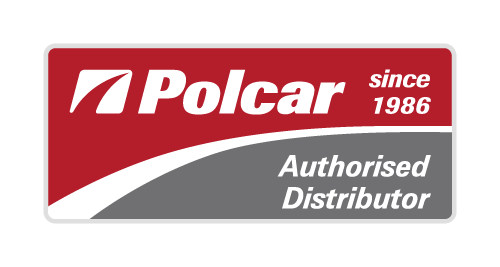
- Pagina principală
- Electrice si Iluminare
- Faruri auto
- Faruri Skoda
Faruri Skoda Octavia 2 (1Z3 1Z5)
Farurile nu reprezinta un moft ci o necesitate atat din punct de vedere legal cat si din punct de vedere al sigurantei in trafic.
BestAutoVest iti ofera o gama larga de faruri auto de la producatori de renume, cum ar fi Faruri Valeo, Faruri Magnetti Marelli, Faruri Ulo, Faruri Originale.
In aceasta categorie gasesti Faruri Skoda Octavia 2 (1Z3/ 1Z5) din 2004-, sau facelift, faruri cu lupa, xenon, Dayline, set faruri originale , Aftermarket sau tuning , Comanda acum si beneficiezi de Livrare Rapida si preturi de Importator.
Articolele 1 - 15 din 28
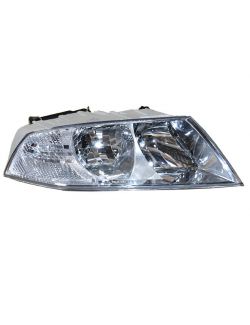
- în acest moment citiți pagina 1
- Pagină Următorul
- Best Auto Vest 3 articol
- DEPO 6 articol
- HELLA 4 articol
- Polcar 1 articol
- TYC 8 articol
- VISTEON 6 articol
- 0,00 RON - 999,99 RON 18 articol
- 1.000,00 RON - 1.999,99 RON 7 articol
- 2.000,00 RON și peste 3 articol
- OCTAVIA (1Z3) 2004- 22 articol
- OCTAVIA Combi (1Z5) 2004- 21 articol
- Dreapta 15 articol
- Stanga 15 articol
- Far complet 28 articol
- Adăugați in coș Adăugați in coș Eliminați acest articol
- Autocatalog
- Compare Vehicles
- Auto Catalog ›
- Skoda ›
- Octavia ›
- Octavia I Tour (1U) ›
- 1.6 (101 Hp)
Skoda Octavia Octavia I Tour (1U) 1.6 (101 Hp) full technical specifications and fuel consumption
![Skoda Octavia Octavia I Tour (1U) 1.6 (101 Hp) full technical specifications and fuel consumption - picture [1] — AutoData24.com Skoda Octavia Octavia I Tour (1U) 1.6 (101 Hp) full technical specifications and fuel consumption](https://cdn3.focus.bg/autodata/i/skoda/octavia/octavia-i-tour-1u/thumb/bfe802eed92055afd93fbd6208917980.jpg)
- Most popular generations
- Skoda Octavia I Tour (1U) 1.9 TDI (90 Hp)
- Skoda Octavia I Tour (1U) 1.9 TDI (110 Hp)
- Skoda Octavia I Tour (1U) 1.6 (102 Hp)
- Skoda Octavia I Tour (1U) 1.6 (101 Hp)
- Skoda Octavia I Tour (1U) 1.8 T (180 Hp)
- Skoda Octavia I Tour (1U) 1.8 T (150 Hp)
- Skoda Octavia I Tour (1U) 2.0 (116 Hp)
- Skoda Octavia I Tour (1U) 1.8 T 4X4 (150 Hp)
- Skoda Octavia I Tour (1U) 1.6 (75 Hp)
- Most popular brands
- Mercedes-Benz
- Most popular models
- Mercedes-Benz E-klasse
- Volkswagen Golf
- Mercedes-Benz C-klasse
- Volkswagen Passat
- Mercedes-Benz S-klasse
- Toyota Corolla
- Skoda Octavia
- Mercedes-Benz M-klasse
- Volkswagen Polo
- Renault Megane
- Honda Civic
- Toyota Avensis
- Opel Vectra
- Toyota RAV 4
- Honda Accord
- Ford Fiesta
- Opel Zafira
- Ford Mondeo
- Mercedes-Benz E-klasse (W211)
- Volkswagen Golf IV (1J1)
- BMW 5er (E60)
- Volkswagen Golf V
- Mercedes-Benz C-klasse (W203)
- Audi A4 Avant (8E)
- Volkswagen Passat (B5)
- Mercedes-Benz C-klasse (W204)
- BMW 3er (E46)
- Mercedes-Benz E-klasse (W210)
- Audi A6 (4F,C6)
- Volkswagen Passat (B6)
- Mercedes-Benz E-klasse (W212)
- BMW 3er (E90)
- Opel Astra H

- Car Reviews
Skoda Octavia review
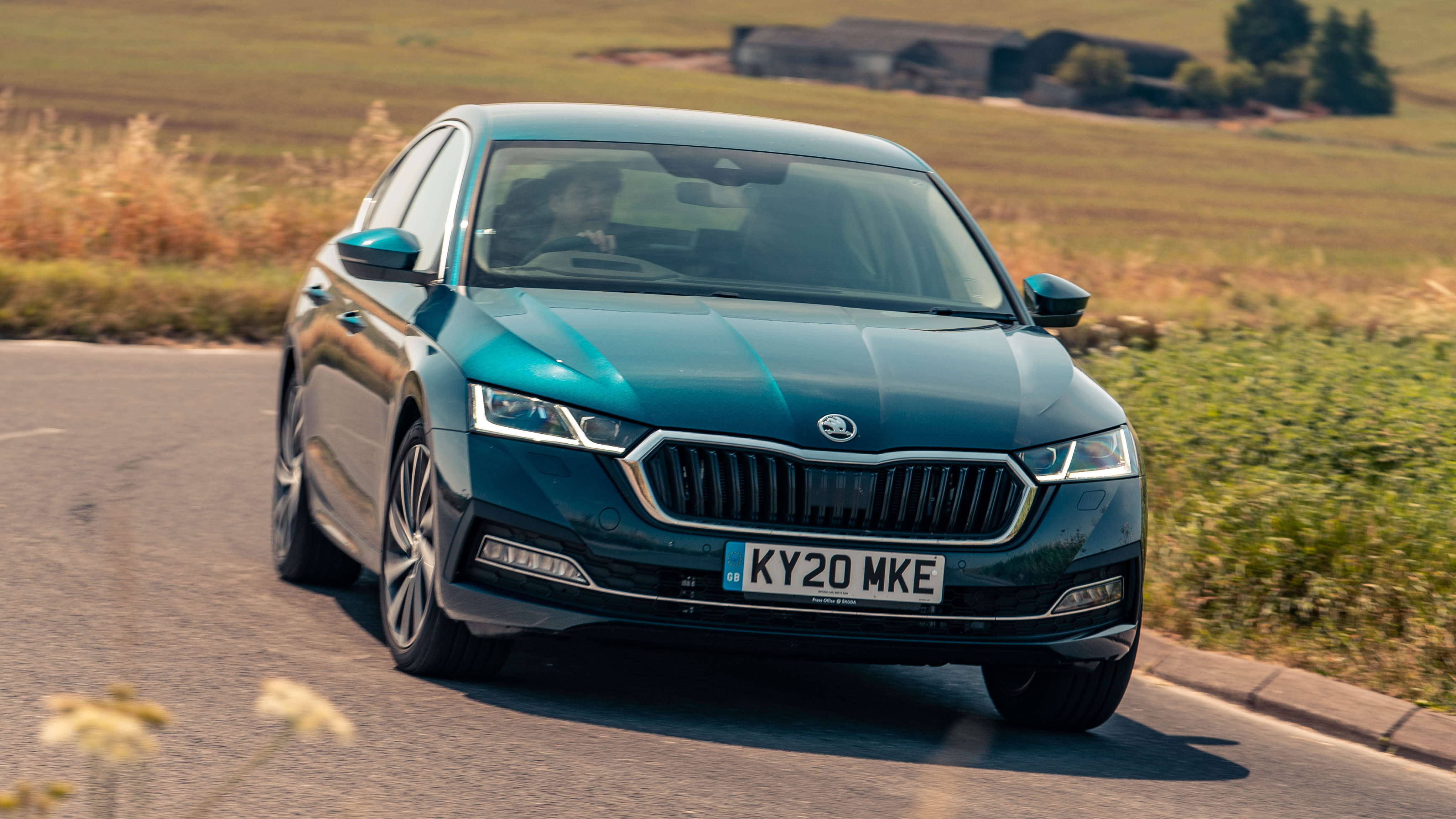
Massively practical, interior wins over the Golf and Leon, smooth petrols
Looks more interesting than before, but still not the most exciting object
What is it?
What is it? It’s a turn up for the books, that’s what it is. Yep, the new Skoda Octavia might just be a better car than the Mk8 Volkswagen Golf upon which it is based.
More on that later. For now, some introductions. This is the fourth generation of the modern-day Octavias, and as is to be expected it’s the most complex and tech-filled yet, with Skoda trying to inject a bit of style to match the usual practicality.
The Czech firm has kept with tradition in offering the Octavia as an estate (you can read about that here ) and the sort of booted-hatch/liftback saloon type thing we have here – whereas VW and Seat stick with traditional shapes for the Golf and the Leon. The liftback has always allowed Skoda to score those all-important practicality points, though, and there’s no change on that front here. The new Octavia’s boot is actually 10 litres larger than before at 600 litres – a whole 120 litres more than you get in the new Golf.
But this time the Octavia hatch (Skoda still refers to it as such) is far more swoopy and interesting to look at too. You’ll no doubt have your own opinions on that slightly aggressive Audi-lite front end, but whereas the Golf’s styling might just have regressed with its new generation, the Octavia is better-looking than the one that went before. It’s larger on the outside too - 19mm longer and 15mm wider to be precise.
Now the ‘First Editions’ have gone off sale (you might still be able to bag one from stock), there are just three trim levels to choose from – SE, SE L and vRS. The latter is sufficiently different to warrant its own review, which is hidden behind these blue words .
There are no real shocks on the drivetrain front either, although there’s plenty of possible combinations to run through. Here goes – in the UK, petrol engines include a 1.0-litre turbo three-cylinder with a 6spd manual gearbox and 109bhp, as well as a 1.5-litre turbo four-cylinder with the same gearbox and 148bhp. Both of those can be had with 7spd DSGs too, although they’re badged as e-TEC mild-hybrids thanks to an additional 48-volt system.
The diesel is a 2.0-litre TDI that comes in 113bhp and 148bhp flavours and can be paired with a manual or DSG gearbox. There’s also a plug-in hybrid – badged Octavia iV – which combines a 1.4-litre petrol engine with an electric motor for a total output of 201bhp and an all-electric range of around 37 miles.
The aforementioned vRS is available with petrol, diesel and plug-in hybrid options. Oh, and in other parts of the world there’s an Octavia G-TEC that runs on compressed natural gas. Don’t expect to see that in the UK any time soon, though.
Our choice from the range
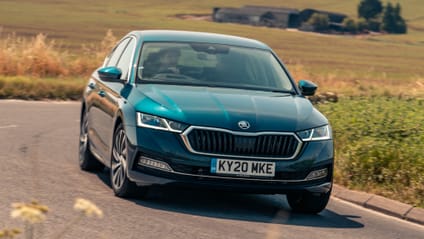
What's the verdict?
As we alluded to earlier on, the Octavia is now almost certainly the car you’d recommend ahead of the Golf and Leon. Crikey, who saw that one coming?
With our most sensible hats on, it’s easily the most practical of the three, has the least annoying interior and is set up to provide a comfortable (if somewhat forgettable) driving experience. Some of the materials may be slightly scratchier than in the Golf and that 2.0-litre TDI is certainly a little louder, but it’s also the most interesting-looking hatch and doesn’t just feel like a Volkswagen Group copy and paste job. A turn up for the books indeed.


Volkswagen Golf (Mk8)
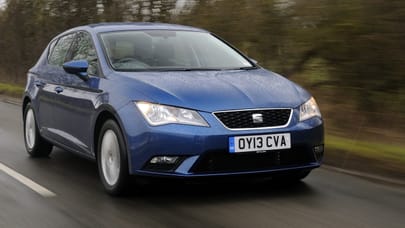
Here are 12 electric pickups you need to know about
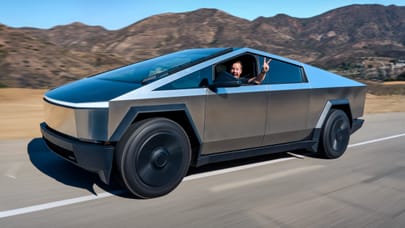
Tesla Cybertruck

These are the 12 best hot hatches of all time
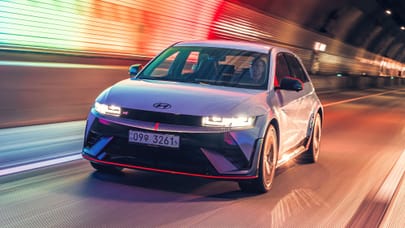
Top Gear's top 20 electric cars
Trending this week, the 820bhp ferrari 12 cilindri is named after its mighty 9,500rpm v12 engine, topgear.com’s guide to pronouncing the new ferrari v12 supercar’s name, jaguar f-type vs porsche 911: the last dance, sound of the underground: welcome to top gear tunnel run, here are five electric mpvs spearheading the family chariot comeback, subscribe to the top gear newsletter.
Thank you for subscribing to our newsletter. Look out for your regular round-up of news, reviews and offers in your inbox.
Get all the latest news, reviews and exclusives, direct to your inbox.
By clicking subscribe, you agree to receive news, promotions and offers by email from Top Gear and BBC Studios. Your information will be used in accordance with our privacy policy .
Sorry, something went wrong

Try BBC Top Gear Magazine
LATEST DEALS:
- Vauxhall Corsa
- Suzuki Swift
Skoda Octavia review
Category: Family car
The Octavia has plenty of pace and practicality for a pocket-friendly price

Share review

Honda Civic
Introduction, what car says....
The Skoda Octavia is a pivotal model in the manufacturer’s line-up. Since it first appeared as a hatchback, it's been the brand’s biggest-selling car, appealing to anybody with a keen eye on practicality and value.
Over the years, Skoda has pushed the Octavia steadily upmarket, and while that departure from its budget roots might have seemed a gamble at first, it certainly paid off.
The Skoda Octavia is now so well regarded that it counts premium family cars including the Audi A3 and the Mercedes A-Class among its rivals. It also competes with more mainstream models such as the Ford Focus, the Seat Leon, the Toyota Corolla and the VW Golf . You might be tempted by the larger Skoda Superb too, as it's not much more expensive.
To maintain its upwardly-mobile trajectory, the latest Octavia has an advanced suite of driver tech, as well a plusher interior and a sharper look than ever before. Its underpinnings are shared with the Golf, but Skoda has increased the distance between the front and rear axles to add more passenger space.

What Car? has a buying service
So, how does the Skoda Octavia stack up against the best family cars ? Read on to find out...
"The Skoda Octavia has long been a favourite here at What Car?. Sure, it’s never been the most thrilling car to look at or even to drive, but with so much space inside its classy interior and a broad range of engines to choose from, it’s always been incredibly compelling." – Steve Huntingford, Editor
Performance & drive
What it’s like to drive, and how quiet it is, engine, 0-60mph and gearbox.
The Skoda Octavia's 148bhp diesel engine (badged 2.0 TDI 150PS) is an impressive performer, with 0-62mph in just 8.6 seconds.
It pulls strongly from low revs, making it a great fit when you're travelling with the whole family and a boot full of luggage. We wouldn’t rule out the cheaper TDI 116, though – it has plenty of low-down shove and we suspect it’ll prove quick enough for many.
Still, good as the 148bhp diesel engine is, our favourite engine is the 1.5-litre petrol, which is similarly quick and a lot cheaper. The only caveat is that you need to work it a bit harder than you do the diesel, although not quite as hard as the little 109bhp 1.0-litre petrol, with its slower 0-62mph time of 10.8 seconds.
The swift-shifting optional dual-clutch automatic gearbox fractionally improves that time, although it still dithers when trying to pull away quickly.
Company car drivers should consider the brilliant plug-in hybrid ( PHEV ) 1.4 TSI iV 204. Its cost advantages are covered in a later section but, as performance goes, it'll rattle off 0-62mph in just 7.8 seconds.

In electric-only mode, it can officially do up to 41 miles on a charge. That's competitive for a PHEV and should cover the majority of commutes. If you want even more performance, take a look at our separate Skoda Octavia vRS review .
Suspension and ride comfort
The Octavia’s natural habitat is the motorway: it can waft along on its softly sprung suspension for mile after mile. The consequence of the soft setup, though, is that it feels a little floaty over crests when you turn off the motorway and on to a more demanding stretch of undulating road.
Potholes and sharp expansion joints can send jolts through the Octavia’s structure, too, and its body can take a moment to settle after you've traversed a speed hump.
It's rather like being in a small boat hitting a big wave. For the most part, though, it’s more comfortable than its direct rivals. If you prefer a more tightly controlled ride, try the Toyota Corolla or the firmer Seat Leon .
An adaptive suspension system that allows you to stiffen or soften the ride is available as an option on SE L trim. It's worth having because it allows you to dial out some of the float on undulating roads. Indeed, that extra composure over wavy crests and falls is something your passengers will thank you for.

Despite the softness of its suspension, the Octavia is perfectly capable when it comes to corners. Its steering is precise and has plenty of reassuring weight, providing a good sense of connection to the front tyres.
The car grips tenaciously through bends but it leans more than a Ford Focus or Seat Leon, meaning that it ultimately doesn’t feel quite as agile. That’s not to say that it’s ever anything less than stable and secure, mind.
The PHEV Octavia iV has a bulky battery pack on board, but because the Octavia's handling isn't a key strength in the first place, the fact the iV feels a bit heavier isn't the end of the world.
Noise and vibration
The 1.5-litre petrol and 2.0-litre diesel engines both send a slight buzz through the Octavia's steering wheel and pedals at higher revs, but it’s far from irritating. Indeed, the diesel is smoother and quieter than the engines in most direct rivals. The 1.4 TSI iV plug-in hybrid is the best, of course, as it's super-quiet in its electric mode.
Unfortunately, wind and road noise aren't as well isolated as they are in the Focus, and you can hear the suspension working away as it tries to smooth out broken surfaces and potholes.
When you lift off the accelerator pedal, automatic Octavias can ‘coast’ out of gear to save fuel, before re-engaging drive smoothly when you put your foot down again.
The stop-start system can be frustrating in traffic though, because it sometimes cuts the engine a bit too soon and takes too long to fire up again.
"The Octavia’s soft suspension helps comfort, but when its floaty ride is mixed with a country road, it can leave passengers feeling rather queasy." – Will Nightingale, Reviews Editor
The interior layout, fit and finish
Driving position and dashboard.
The steering wheel in the Skoda Octavia has plenty of reach and rake adjustment and the seat has a good range of movement, so finding an ideal driving position is easy.
A powered driver’s seat with a memory function does make getting comfortable even easier, but it’s only available on SE L and vRS models as part of an expensive option pack. All Octavias have adjustable lumbar support to help fend off back pain on long journeys.
Another feature that's standard across the range is an easy to read digital instrument display that takes the place of conventional analogue dials. A fully configurable instrument cluster with different layout and content options is standard from SE Technology, while a head-up display that projects your speed and other information on to the windscreen is on the options list of SE L and above.
Unfortunately, the air conditioning controls are located in the central touchscreen.
True, the temperature icons are always on display at the bottom, but other climate functions are hidden away in one of the menus. That can prove a distraction if you need to fine-tune the settings while driving.
Visibility, parking sensors and cameras
The Octavia has large side windows and relatively thin windscreen pillars so looking forwards, or left and right at junctions, is easy.
As with many rivals, when you look back over your shoulder, there are a couple of large pillars in your way, and these tend to obscure what's lurking behind you. We'd also point out that the long, high tail is harder to judge than more upright rivals when reversing.
To help relieve parking worries, entry-level SE trim comes with rear parking sensors, while SE Technology, and SE L get front parking sensors too. A rear-view camera is on the options list, as is a system called Park Assist that will steer the car into a space for you.
Bright LED headlights and an auto-dimming rear-view mirror are standard across the range, but they can be upgraded at a cost to clever adaptive matrix LED headlights that allow you to use the main beam more often without blinding other drivers.

Sat nav and infotainment
Helpfully, Skoda has positioned the infotainment touchscreen in the Octavia high on the dashboard so you don’t have to take your eyes far from the road to see it. All models come with a 10.0in touchscreen, Bluetooth, Android Auto and Apple CarPlay smartphone mirroring, and a DAB radio. If you want built-in sat-nav , you’ll need to opt for either SE Technology or SE L trim.
The system’s graphics look sharp and sophisticated, with large virtual buttons that are relatively easy to use while you’re driving along. What’s more, when you do give them a prod, the screen is far more responsive than the one in the Toyota Corolla.
That said, the infotainment systems in the BMW 1 Series and the Mercedes A-Class have more logical menus and physical controllers between the front seats, making them much easier to use while driving. The Octavia has to make do with two touch-sensitive home and menu icons, which are inconveniently sited at the top left corner of the screen.
You can have up to five USB-C ports in your Octavia: two in a handy cubby in front of the gearlever, another two for rear-seat passengers and another up by the rear-view mirror (to power a dashcam). Wireless phone-charging and an upgraded stereo are available as options.
Plush, squidgy plastics are present on the top and front of the Octavia's dashboard and above the armrests on the doors.
There are some harder plastics lower down, but they're pleasingly textured and everything feels solidly screwed together. SE L trim gets a faux-suede surface for part of the dashboard, lifting the ambience further.
The stalks behind the steering wheel feel good to use, as do the steering wheel buttons, but the metal-effect scroll wheels on the spokes feel a little flimsy.
All in all, the Octavia is as solid inside as the Corolla but a little plusher, and miles ahead of the Focus. All must bow down to the 1 Series for best in class quality, though.
"The touch-sensitive shortcut icons, being on the left-hand side of the screen, proves quite a stretch to reach, especially for shorter drivers." – Claire Evans, Consumer Editor
Passenger & boot space
How it copes with people and clutter, front space.
There’s plenty of space up front in the Skoda Octavia. A very tall driver will be able to get comfortable even with a head room-robbing panoramic glass roof fitted. Storage is better than in most rivals, too: each door pocket can take a 1.5-litre bottle of water and the cooled glovebox is big enough to keep your lunch fresh.
Behind the gearlever are two fixed cupholders that will keep your coffee-to-go secure and, ingeniously, can grip drinks bottles tightly enough that you can twist off the cap with one hand. In front of the gear selector is a handy tray that’s big enough for a large mobile phone to sit next to your house keys and wallet or purse.
There’s also a large covered storage space under the front armrest for hiding electronic devices and other valuables. Like the glove box, it's cooled, so it's ideal for a second round of sandwiches.
The Octavia is pretty generous on rear-seat space. Behind a tall driver with their seat pushed back, even taller passengers will be able to lounge in comfort, and there’s loads of elbow room.
Anyone regularly carrying giants, should be aware that the Ford Focus and the Seat Leon are even more well endowed with rear space.
The middle rear-seat passenger has no choice but to place their feet on either side of the car’s raised central floor hump, but the big footwells mean this isn’t too restrictive.
The Octavia’s rear seat is surprisingly wide, making it a very comfortable car for three back-seat passengers to sit side by side in.
A central armrest with two cupholders is standard on all models, and the rear door pockets are a decent size. Every model has a map pocket on the back of each front seat, along with a smaller smartphone pocket, plus sizeable rear door bins.

Seat folding and flexibility
In terms of its flexibility, the Octavia is pretty conventional by family car standards. The folding rear seats follow the usual 60/40 split arrangement (the Mercedes A-Class gets a more flexible 40/20/40 split).
We like the fact that they can be folded by levers in the boot, so you don’t have to open a side door before loading that bulky flat-pack furniture you’ve just bought.
Unfortunately, though, the seats don’t lie completely flat when folded, and they leave an awkward step in the extended load area.
The Octavia’s boot is not only huge compared with similarly-sized rivals, it also dwarfs most competitors from the class above.
The load area is longer and taller than in most comparably priced hatchbacks, and it’s a practical, squared-off shape. The only downside is that there is quite a significant lip to negotiate when lifting heavy items in and out of it – the hatch doesn’t get the option of an adjustable boot floor (the Skoda Octavia Estate does).
With its big battery pack and other plug-in hybrid-related hardware to carry around, the iV’s boot shrinks a little bit. The floor sits higher than it does in the petrol and diesel variants, but compared with most other plug-in hybrids, it's still massive.
As standard, there’s a 12V socket, a couple of bag hooks and a couple of fenced-off areas that will stop your de-icer and other boot clutter sliding around. Options include a space-saver spare wheel that sits under the boot floor and an electric tailgate with hands-free gesture control.
"A height-adjustable boot floor would be great, but it's otherwise hard to complain about the Octavia's practicality," – Lawrence Cheung, New Cars Editor
Buying & owning
Everyday costs, plus how reliable and safe it is, costs, insurance groups, mpg and co2.
The Skoda Octavia’s model hierarchy is a little different to the brand’s norm. The usual SE variant is there, but it acts as the entry point here.
SE Technology seems good value against the Ford Focus and the Seat Leon, and even top-end SE L will set you back much less than equivalent premium models, such as the BMW 1 Series and the Mercedes A-Class. The plug-in hybrid (PHEV) iV is available only in the upper trims, but is still competitively priced against other PHEVs .
Skoda is usually generous with deposit contributions, too, so expect a competitive monthly PCP finance rate unless you go for the business-oriented SE Technology model. Similarly, you'll find plenty of discounts on our New Car Deals pages for all but SE Technology trim. Insurance costs sit between the Focus and the Toyota Corolla.
Official CO2 emissions are broadly in line with those of the Focus, although the hybrid Corolla performs noticeably better.
Company car drivers will be far better off trying the PHEV iV model – it's in one of the cheapest BIK tax bands for anything other than a fully electric car. The iV will take around 6hrs to charge from a three-pin plug, and 3hrs from a 7kW home wall box (0-100%).
Equipment, options and extras
Our chosen trim is the mid-range SE Technology trim because it offers the best value for money, costing hardly any more than SE trim despite gaining front parking sensors and infotainment upgrades.
Not that SE is poorly equipped – it gives you 16in alloy wheels, dual-zone climate control, auto lights and wipers, heated door mirrors, keyless start and even an umbrella in the door.
There’s a bit of a price jump to SE L, but you get plenty of extra luxuries and some useful kit for your money, making it a justifiable indulgence.

Reliability
The Octavia performed poorly in the 2023 What Car? Reliability Survey finishing down near the bottom of the 15 family cars polled. It was above the Audi A3 and the VW Golf but behind its other rivals.
In the manufacturer table, Skoda fared better, claiming 16th place out of the 32 included brands. Toyota did far better, claiming second place, but Skoda’s other rivals finished further down the table – Seat taking 18th, BMW 12th, Mercedes 24th and Ford 17th.
If things do go wrong, you’ve got a three-year, 60,000-mile warranty that can be extended to five years and 100,000 miles for a fee. With the Corolla, you can extend the warranty up to 10 years or 100,000 miles if you service your car at a main dealer each year. Kia's class-leading standard warranty gives you seven years or 100,000 miles of cover.
Safety and security
The Octavia received the top five-star safety rating from Euro NCAP and was found to be better at protecting adult occupants than the Focus in the event of a crash. The Corolla scored better marks for side-impact protection than both, but that car didn't perform as well as the Octavia in some frontal crashes.
Automatic emergency braking ( AEB ), lane-keeping assistance and an e-call system that notifies the emergency services if you’re involved in an accident are standard on all models.
Blind-spot monitoring can be added to SE L trim for a reasonable cost to warn you of following traffic approaching. Adaptive cruise control is standard on SE L (optional on SE), which maintains a steady gap between you and the car in front, braking to match its speed where necessary.
"On our carefully controlled test route, an Octavia paired with the 1.5-litre petrol engine averaged a frugal 48.5mpg, beating a rival Seat Leon’s 46.3mpg effort." – Neil Winn, Deputy Reviews Editor
For all the latest reviews, advice and new car deals, sign up to the What Car? newsletter here
When tested by our team of experienced road testers, the Octavia was awarded the full five stars, which is no mean feat. Compared to its family car rivals, it's more accomplished in most areas, including practicality, quality and value for money.
Yes. In fact, thanks to the Octavia’s larger dimensions, you’ll find that it’s far more practical than the VW Golf , with a far superior boot, and more comfortable for passengers in all of the seats.
The entry-level SE comes with plenty of standard equipment, including 16in alloy wheels, rear parking sensors and dual-zone climate control, but our favourite SE Technology trim seems the best value. It barely increases the price but adds front parking sensors, infotainment upgrades and other kit.
Explore more of the Skoda Octavia
- Full review Currently reading
- Versions & specs
- View our offers

Best family cars: our top 10 revealed

2024 Skoda Octavia receives AI infotainment system

Used test: Seat Leon vs Skoda Octavia interiors

Used test: Seat Leon vs Skoda Octavia costs

Skoda Octavia iV Estate long-term test: report 6

Skoda Octavia iV Estate long-term test: report 5
More skoda octavia, used reviews.
Used Skoda Octavia Estate 2013-2020
Used Skoda Octavia Estate 2020-present
Used Skoda Octavia Hatchback 2013-2020
Used Skoda Octavia 2020-present
Used Skoda Octavia Hatchback 2004 - 2013
Used Skoda Octavia Hatchback 1998 - 2004
New reviews
Skoda Octavia Estate
Also consider

The best driver’s car in the family hatchback class, wit...

New Audi A3
The 2024 A3 Sportback has an improved interior but remains com...

Volkswagen Golf
Family car is good to drive, but let down by a fiddly dashboar...

Toyota Corolla
The Corolla is a fine family car with hybrid engines that offe...
All Family car reviews
Quick search.
- All car reviews
- All new car deals
- Used cars for sale
- All used makes
- Vans and commercial vehicles
- New car awards
- Used car awards
- Classic & Sports Car
- Move Electric
Tools & services
- Car finance
- Car warranty
- Gap insurance
- Sell your car
- Car Leasing
- Car Valuation
- Company car tax calculator
- Van tax calculator
- Terms & conditions
- Cookie policy
- Privacy policy
Information
- About What Car?
- Contact What Car?
- Subscribe to our newsletter
- Subscribe to What Car? magazine

What Car? is part of Haymarket Automotive , a division of Haymarket Media Group © Haymarket Media Group 2024

- Cere oferte de piese
- Vinde o piesă
- Cereri piese
- Parcuri dezmembrari auto
- Magazine piese auto
- Dezmembrari auto
- Service-uri & Manoperă
- faruri skoda octavia 1
- Data actualizării ▲
- Data actualizării ▼
- Data adăugării ▲
- Data adăugării ▼
- Preţ ▲
- Preţ ▼
Faruri skoda octavia 1
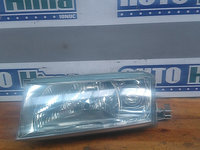
Far dreapta, Skoda Octavia 1 Combi (1U5) [Fabr 1998-2010]
![far skoda octavia tour Far stanga Skoda Octavia 1 Fara Semnalizare Skoda Octavia [1996 - 2000]](https://www.pieseauto.ro/poze/far-stanga-skoda-octavia-1-fara-semnalizare-skoda/far-stanga-skoda-octavia-1-fara-semnalizare-skoda-611df105fc1738dc1ef-200-150-2-95-1.jpg)
Far Dreapta Halogen cu Proiector Ceata Skoda Octavia 1 1997 - 2001
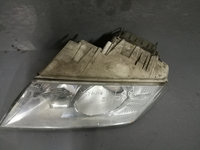
Far stanga Skoda Octavia 1 2002
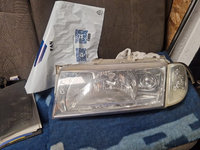
Far dreapta, 665-1108R-LHD, Skoda Octavia I
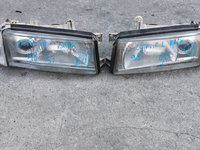
Set faruri Skoda Octavia 2 2006 HATCHBACK 1.6 i
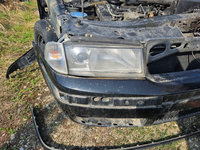
Far Dreapta Am Skoda Octavia 1 1996-2000 1U1941016A
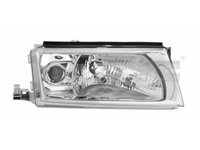
Far Skoda Octavia 1 Sedan Combi 2000-2011 stanga , faruri skoda cu lampa ceata, tip bec H3+H4 , cu motoras , electric , TYC
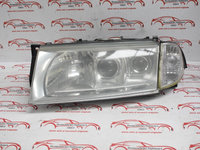
Far Dreapta Skoda OCTAVIA 1 (1U) 1996 - 2010 1U1941016K, 1U1 941 016 K
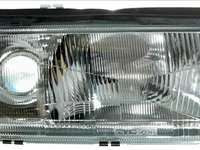
Faruri / far Skoda Octavia 1
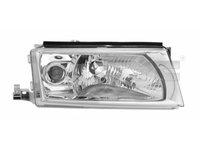
Faruri Skoda Octavia 1
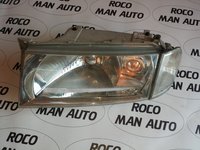
Far Skoda Octavia 1 H4/H3

Far SKODA OCTAVIA 1 Combi (1U5) (1998 - 2010) HELLA 1EL 010 202-021
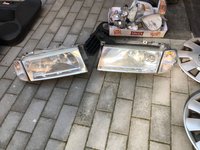
Far SKODA OCTAVIA 1 (1U2) (1996 - 2010) HELLA 1EL 010 202-021
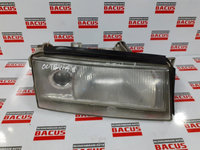
Faruri SKODA OCTAVIA I
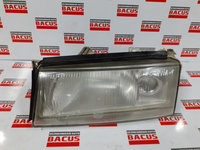
Far Skoda Octavia 1-Stanga
![far skoda octavia tour Far Skoda Octavia 1 (1996-2010)[1U2] 1U1941018](https://www.pieseauto.ro/poze/far-skoda-octavia-1-1996-2010-1u2-1u1941018/far-skoda-octavia-1-1996-2010-1u2-1u1941018-2e3a0f58af0b0e7ddc-200-150-2-95-1.jpg)
Far xenon stanga depo skoda octavia 1
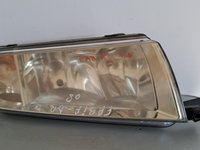
Far dreapta cu xenon Depo pt skoda octavia 1
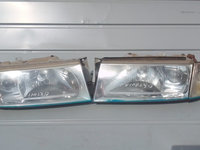
Vrei și mai multe oferte? Adaugă o cerere de piese auto și vei primi oferte de preț personalizate de către vânzătorii din PieseAuto.ro - Tu alegi preţul! Cere oferte de piese
2020 Skoda Octavia: All We Know so Far
Fourth-generation Skoda Octavia detailed ahead of September reveal
The Octavia is unquestionably a money maker for Skoda, a Europe-wide phenomenon that has been sweeping the continent since the original debuted in 1996. The latest (third) generation model has also proven highly popular and is still selling well today, despite the fact that it was actually launched way back in 2013. Now an all-new model is on the verge of being launched and we don’t expect it to be a misstep for Skoda. The Czech automaker will want to put its best foot forward with the fourth-gen Octavia since, even though it is not a high-riding crossover, Skoda sells nearly 400,000 units per year in Europe, among its different versions.
However, Skoda has changed its model structure with the release of the new Scala hatchback, and it’s this model that now occupies the spot in the range that was previously taken up by the Octavia. Well, they’re sold alongside right now, but that’s only until the new Octavia arrives. All information seems to point to the fact that it will be sold as a more expensive and more upmarket offering - this is a formula change compared to before when it had to fill the range now occupied by the Scala.
What will the 2020 Skoda Octavia look like?
The Octavia, whichever version we’re talking about, is one those model lines that is easily recognizable regardless of generation. You can clearly see there’s a visual link between the first generation model and the very latest one, so with that being said, we don’t expect any dramatic design changes for the next generation. The car will definitely adopt Skoda’s new style that we’ve seen on the Scala and the Superb facelift. And, while it will definitely be a stylish and restrained car, we don’t expect to be blown away by its look - it will just look modern and dignified as all modern Octavias have.
The grille also looks bigger in relation to the rest of the front end. The headlights and the hood still have the same style creases that have been there since the second generation of the Octavia.
So far we’ve only seen the wagon (estate) model in spy shots and, from the side, it certainly looks like a car one class up. Now that the automaker has the Scala in its range (to fight the Ford Focus, among others) and taking into account the fact that the Superb is just massive, there is room for the Octavia to grow a bit bigger than it was before. The load-lugger version certainly looks vast, and it even looks like it has a bigger wheelbase.
We don’t know what the more popular hatchback model will look like, given that there are absolutely no photos of it anywhere. It will probably retain the sedan-like profile of its predecessors, so much so that very few people who don’t know what it is will notice that it is, in fact, a hatchback.
From the back, it certainly looks a lot like the Superb. Regarding the hatchback version, it is believed it will look a bit more like a four-door coupe, but since we’ve yet to see any photos of it, this is pure speculation at this point.
What will power the 2020 Skoda Octavia?
Skoda is part of the Volkswagen Group, so all engines that will power the fourth-generation Octavia will be shared with other group offerings. The range of engines will be comprised of turbocharged gasoline and diesel mills that power other cars based on the same MQB architecture.
Next up will be the 1.5-liter four-pot TSI and a 2.0-liter TDI diesel. Skoda will most likely still offer two flavors of hot RS model, both powered by 2.0-liter four-cylinder engines (one gasoline and one diesel). We, therefore, expect power levels between 115 horsepower all the way up to around 250 horsepower, so regardless of your want or need, you'll be catered to nicely.
It is believed that both mild hybrid and plug-in hybrid versions will be available, although we don’t have details on either of them as of yet. The only VW group powertrain that currently fits this bill powers the VW Golf GTE, Passat GTE, and, more recently, the Skoda Superb. It is a 1.4-liter TSI engine that, in conjunction with an electric motor, produces a combined output of 215 horsepower.
Regarding the proliferation of 48V mild hybrid tech, VW says it will be part of the EA211 family of power plants (the 1.0- and 1.5-liter TSI engines) and exclusively paired with the double-clutch DSG gearbox. The manufacturer estimates that this will improve a car’s efficiency by 0.4 l/100km. The same should apply for Skoda too, and this will be achieved through the use of unique functions like FMA (Freewheel, Motor Off) mode, as well as predictive assistance which essentially uses the navigation system and adapts to coming speed limits, bends, and obstacles to “make the best possible use of the vehicle's kinetic energy.”
What versions of the 2020 Skoda Octavia will be available?
Well, as we’ve come to expect from Skoda, the manufacturer will offer two special versions of the Octavia, for those that feel the regular models are too ordinary. The first is the Octavia RS, the hot hach (or wagon) version of the car that will feature more aggressive bumpers, side skirts, wheels, and a spruced up interior complete with a sporty steering wheel and sports seats.
We expect the gasoline Octavia RS to sprint to 100 km/h (62 mph) in under 7 seconds and the diesel in around 8 seconds.
The other special Octavia will be the Octavia Scout. It is a raised, exclusively all-wheel drive model that also comes with styling tweaks to reflect its more outdoorsy character. It will ride on unique wheels not available on any other model in the range and will feature plastic body cladding to make off-road driving less stressful. Inside it will have subtle design tweaks to set it apart from lesser Octavias, as well as plentiful “Scout” badges smattered around.
We also expect Skoda to sell the plug-in hybrid model of the Octavia as the Octavia iV, a special model that will come with unique exterior details to set it apart from other Octavias. If it follows the example set by the Superb iV (and we’re sure it will), the Octavia iV will ride on unique rims designed to improve aero efficiency and it will also feature a fully blocked out (and blacked out) front grille that will hide the door for the charging port.
Current Skoda Octavia vRS vs competition
What else is there to know about the 2020 Skoda Octavia?
We have not yet seen any spy photos of the hatchback model and we’re really wondering why. All the shots of camouflaged, next-gen Octavia prototypes testing are of the wagon, so we’re wondering why Skoda is keeping its look such a big secret. Maybe the car will be turned into an actual sedan (now that the Scala hatch is part of the range), or maybe its look is so radically different compared to what we’re used to from the model that they really want to surprise the crowds at the car’s reveal.
So expect a more luxurious feel than ever inside, and more space too, courtesy of its larger wheelbase. We can’t actually confirm its wheelbase will be stretched, but looking at photos of the wagon model, it does look quite a bit longer than before.
Skoda will definitely not get this model wrong, even though the company has shifted its focus towards SUVs more than ever before. But, even so, the Octavia is one of the company’s bread and butter models, so it’s definitely invested some serious resources and effort into making it as good as it can be. Even with so many crossovers around these days and the shrinking markets for more traditional body styles, Skoda will want to nail the Octavia, to maintain the nameplate’s prestige. Maybe in the future it will use the Octavia name on a new crossover and it won’t want negative connotations associated with it.
The all-new Octavia is expected to debut at the 2019 Frankfurt motor show (2019 IAA) this September.
Further reading
Read our full review on the 2019 Skoda Octavia.
Read our full review on the 2019 Skoda Scala.
Read our full review on the 2017 Skoda Octavia vRS.
Skoda’s diesel Octavia RS: there are just some cars that feel made for Ireland
When the bright green rs estate arrived for testing, it felt like christmas and a birthday had come at once.
Skoda Octavia RS: The diesel RS is the rural Irish equivalent of a red Ferrari to northern Italy
It was supposed to have been our last chance. Just before the end of 2023, Skoda Ireland put in a call to remind us that when the latest update to the hugely popular Octavia was scheduled to arrive, in mid-2024, there would be no more diesel-engined sporty RS version.
The diesel RS is the rural Irish equivalent of a red Ferrari in northern Italy, or a sliver Porsche in the hills surrounding Stuttgart. It is the sine qua non of performance, mixed in this case with relative affordability and practicality.
So yes, we would be hugely interested in taking a white fastback Octavia RS saloon for one last spin. And we did. And we were sad to see the back of it, even with the reassurance that the updated Octavia range will still contain a petrol-powered RS model. There is still just enough rural (west Cork, in my case) blood in our veins to make the diesel version more resonant.
There are just some cars that feel made for Ireland. They don’t come up all that often, as most of the big car makers tune and tweak their cars for the biggest markets
And that was it. Goodbye, so long, auf wiedersehen, farewell. Except, it wasn’t quite. Except, like Frank Sinatra, Status Quo and Spina Tap, the diesel Octavia RS managed to summon the energy for one last farewell tour. And this time it was going to be even better.
:quality(70):focal(1898x2045:1908x2055)/cloudfront-eu-central-1.images.arcpublishing.com/irishtimes/VZU6SAEQOJEQFLX3XT5PHMBRM4.jpeg)
VW ID.7: Impressive limo-length EV with a big range – and price tag
:quality(70)/cloudfront-eu-central-1.images.arcpublishing.com/irishtimes/7QWWRTXHKZGCVNXGPAA7LBV3JU.jpg)
Aston Martin’s new DB12 Volante is loud, sleek and proud
:quality(70)/cloudfront-eu-central-1.images.arcpublishing.com/irishtimes/BJDQMOP5SJDG5FWOYKC6ZKY5MA.JPG)
New long-life electric car battery with 1.5m-kilometre warranty could spell end of longevity concerns
:quality(70):focal(2300x1185:2310x1195)/cloudfront-eu-central-1.images.arcpublishing.com/irishtimes/V7JOEGYA7JUD7KFOSDWSPTLOGI.jpg)
There are just some cars that feel made for Ireland. They don’t come up all that often, as most of the big car makers tune and tweak their cars for the biggest markets – Germany, the UK, China, the US. Hardly surprising, really. Who’s going to allocate expensive engineering and development time for the sake of a few hundred Irish sales each year?
[ VW ID.7: Impressive limo-length EV with a big range – and price tag ]
Nonetheless, sometimes serendipity provides. Occasionally, a car designed and engineered for elsewhere seems to work perfectly here. The Skoda Octavia RS diesel is one of those cars, and it’s not just the way it feels on the road.
Mind you, that does seem to be pretty much ideal for Irish conditions, as it happens. Skoda has previously undertaken chassis development work in Ireland, but that was for the all-electric Enyaq. Perhaps by osmosis then, the Octavia RS seems to have picked up some of that knowledge and applied it brilliantly.
The steering has a meaty weight to it
The RS isn’t the punchiest car around – 200hp and 400Nm of torque are decent, but a 7.4 seconds 0-100km/h time is no one’s idea of high performance. That said, the solid hit of mid-range torque, on tap from as little as 1,750rpm, means that the Octavia RS can still feel indecently fleet when you chase it up through the gears. Fuel economy is still excellent, though – 5.0-litres per 100km when you are cruising; 6.0-litres per 100km at, ahem, other times.
It manages to feel far more deft than you’d be expecting, too. The Octavia RS is not a dainty car – 1,500kg is lighter than any EV equivalent, but it’s still on the chunky side – but it can be made to dance with the alacrity of a semi-pro Strictly entrant when the mood takes you. The steering has a meaty weight to it, and while you have to give the nose a second or two to allow for the weight of the diesel engine up front, once it does so the RS seems to pivot nicely around your hips. On a traditional stretch of broken, twisting, narrow, wet and slippery Irish back road, it felt utterly at home and outrageously enjoyable.
But this is Ireland, so there’s more to being well-suited here than just being fun to drive. Having two cars is an unknowable luxury for most, so the Octavia RS has to perform multiple duties. Which it does with aplomb and most especially the version we were driving. Yes, the white saloon version was nice enough, but when the bright green RS estate arrived for testing, it felt like Christmas and a birthday had come at once.
Combined with the spacious rear seats, there is also a high-quality cabin
You mean I can have the 200hp thump, the deft chassis, and still carry a wardrobe, or two, in the 640-litre boot if needed? Yes I can… combined with the spacious rear seats, and the kind of high-quality cabin that will convince even beady-eyed elderly relatives that you’ve just had a promotion at work. Seriously, if you can find a qualitative difference between the cabin of this Octavia RS and a similar Audi, BMW or Mercedes, then please write to us on a postcard.
It’s also a subtle-looking thing, or would have been without the mamba green paint, which personally I would not discard. The saloon gets a minimalist strip of carbon-fibre spoiler at the edge of the rear hatch; there are some subtle-looking 19-inch alloys; and a discreet RS badge in the corner of the grille. Only the cognoscenti will spot it (green paint aside). Everyone else will assume you’ve bought a sensible Skoda saloon, and in the land of begrudgery, that cannot be underestimated.
With diesel having little appeal these days, that’s perhaps not very surprising. The good news is that Skoda is currently working on an all-electric replacement for the Octavia, and given that there’s already an all-electric RS in the form of the Enyaq, maybe there’s hope for the future.
Or, for that matter, for the present. Skoda is currently partnering with fuel supplier Certa to encourage its diesel-driving customers to switch to HVO (hydro-treated vegetable oil) as a diesel substitute. While there is – occasionally frenzied –debate about the efficacy of HVO, and whether its claimed 90 per cent reduction in carbon emissions is worth the paper it’s printed on, if nothing else at least it’s slightly less noxious than burning fossil diesel, and as the supermarket people say, every little helps, right?
[ BYD’s impressive Dolphin is bound to make a big splash ]
Away from such concerns, Skoda has just celebrated 30 years in Ireland, and it has expanded from just 73 buyers that first year, who could only choose from the Felicia hatchback, to more than 10,000 in 2023, with the 10,000th collecting their €50,000-odd Enyaq EV in October.
The Octavia has been a huge part of that success, and amid the apparently insatiable clamour for SUVs, it’s still in the top-10 best-sellers list – actually the second best-selling car in Ireland at the time of writing, and that’s without even the newest updated model arriving yet – and has helped Skoda to second place overall in the Irish sales charts. The Czechs may even now be eyeing up Toyota’s first position.
That is for the future, but perhaps future Skoda success has been ordained from on high. After all, when The Irish Times spoke to Skoda Ireland’s brand manager John Donegan, his most cherished memory of his time with the car maker was: “August 25th, 2018. Pope Francis disembarked an Alitalia flight at Dublin Airport and boarded a specially developed Skoda Rapid that transported him for the duration of his historic visit to Ireland.”
From holy orders to a car wholly suitable for Irish conditions. Happy (belated) birthday Skoda Ireland, and happy travels Octavia RS diesel. We’ll not see your like again.
Lowdown: Skoda Octavia RS TDI
Power: 2.0-litre four-cylinder turbo-diesel putting out 200hp and 400Nm of torque through a seven-speed automatic gearbox powering the front wheels.
0-100km/h: 7.5 seconds.
Emissions (motor tax): 129g/km (€200)
Fuel consumption: 4.9l/100km (WLTP).
Price: €47,845 as tested (Octavia starts at €30,245).
Our verdict: Perfectly pitched for Irish conditions, and you can use HVO as a diesel fig-leaf.
Neil Briscoe
Neil Briscoe, a contributor to The Irish Times, specialises in motoring
IN THIS SECTION
Ev sales slide accelerates, simi figures show, our test drive: volvo v60, our test drive: yangwang u8, test drive: byd’s seal-u suv to come with hybrid power, asylum seekers pitch tents in ballsbridge park after dublin city centre camp cleared, we need to talk about why we’re all so angry, man arrested after apparent kidnap attempt of 2-year-old child in dublin, ‘incredible’: rsa decision not to appear before public accounts committee criticised, vast majority of anti-immigration posts relating to wicklow protests came from non-irish accounts, latest stories, locks, chains, diversions: how columbia students seized hamilton hall, numbers on live register fall in april, leinster team news: ross molony and josh van der flier return for croke park clash, kerry group novel of the year shortlist, ‘hard-core’ group of far right protesters stage demonstration outside taoiseach’s home.
- Terms & Conditions
- Privacy Policy
- Cookie Information
- Cookie Settings
- Community Standards

COMMENTS
Faruri Skoda Octavia de vânzare. Înapoi. Contul meu Intră în cont. Cere oferte de piese; ... Far dreapta Skoda Octavia 1 Tour. 150 lei. Zoli81 4383. Far Skoda Octavia/Tour (1u2/1u5), 01.2001-11.2010, Electric, tip bec H3+H4, omologare ECE, fara motoras, 1U1941017D, 1U1941017P, 1U2941017N, Stanga, cu far ceata, marca TYC ...
Specs datasheet with technical data and performance data plus an analysis of the direct market competition of Skoda Octavia Tour 1.6 in 2010, the model with 5-door hatchback (liftback) body and Line-4 1595 cm3 / 97.5 cui, 75 kW / 102 PS / 101 hp (ECE) of power, 148 Nm / 109 lb-ft of torque, 5-speed manual powertrain offered up to mid-year 2010 for Europe . Specifications listing with the ...
Far Skoda Octavia/Tour (1u2/1u5), 01.2001-11.2010, Electric, tip bec H3+H4, fara motoras, 1U1941017D; 1U1941017P; 1U2941017N, stanga/dreapta, cu far ceata, marca TYC
Mai multe. Dispersor sticla far Skoda Octavia 1 (1U2/1U5) Limuzina 5usi + Combi din 03.1997-12.2000 TYC partea Stanga. 84,00 RON. Epuizat din stoc. Mai multe. Far Skoda Octavia 1 (1U2/1U5) LIM. 5D + Combi 01.2001-11.2010 DEPO partea Dreapta tip bec H3+H4, cu far ceata, reglare electrica.
Far Skoda Octavia/Tour (1u2/1u5), 01.2001-11.2010, Electric, tip bec H3+H4, omologare ECE, fara motoras, 1U1941017D, 1U1941017P, 1U2941017N, Stanga, cu far ceata, marca TYC. 292 lei. Bestautovest 35063. Far Skoda Octavia Tour NOU dreapta /stanga. 200 lei. Piesaok 4514. Faruri skoda octavia tour.
The following versions and sub-models of Skoda Octavia 2nd-gen. Tour Liftback were available in 2010 (3 versions, see below for more details): 2010 Skoda Octavia Tour 1.4 16V (80) (man.
In this Skoda Octavia Mk3 In Depth Tour, we'll be exploring all the hidden features of this great car. From the clever infotainment system to the great littl...
The Škoda Octavia is a small family car produced by the Czech car manufacturer Škoda Auto since the end of 1996. It shares its name with an earlier model produced between 1959 and 1971. Four generations of the modern-era Octavia model have been introduced to date, delivered with five-door liftback or five-door estate styles only. The car is front engined, both front- or four-wheel drive are ...
Far Skoda Octavia Ii/Tour 2 (1z3/1z5), 06.2004-02.2008 Electric, tip bec H1+H7, omologare ECE, cu motoras , cu lentila (Xenon look), 1E1941017D; 1Z1941017D; 1Z1941017Q; 1Z2941018D; HL7004V, Stanga, marca DEPO. 598 lei. Bestautovest 33343. Far Skoda Octavia Tour NOU dreapta /stanga.
For 10 years, Skoda has been supplying the Tour de France with new cars. And no one has ever felt cheated. William Fotheringham. Sun 4 Aug 2013 05.30 EDT. Price from £17,190. MPG up to 74.3. Top ...
The following versions and sub-models of Skoda Octavia 1st-gen. Tour Combi (Wagon) were available in 2010 (4 versions, see below for more details): 2010 Skoda Octavia Tour Combi 1.4 16V (man.
Make your contribution - for the sake of the environment. www.skoda-auto.com Návod k obsluze Octavia Tour anglicky 05.10 S63.5610.35.20 1U0 012 003 MH... View and Download Skoda Octavia Tour owner's manual online. Octavia Tour automobile pdf manual download.
In aceasta categorie gasesti Faruri Skoda Octavia 2 (1Z3/ 1Z5) din 2004-, sau facelift, faruri cu lupa, xenon, Dayline, set faruri originale , Aftermarket sau tuning , Comanda acum si beneficiezi de Livrare Rapida si preturi de Importator. Far Skoda Octavia 2 dreapta Sedan 1Z3 / Octavia Combi 1Z5 06.2004-12.2012; faruri skoda cu bec H1+H7.
【Skoda Octavia Octavia I Tour (1U)】 full technical specifications, models and characteristics. Engine: 1.6 (101 Hp) Maximum speed: 187 (190 )km/h Fuel consumption - urban: 10.7 (12) l/100 km. More information online AutoData24.com
The diesel is a 2.0-litre TDI that comes in 113bhp and 148bhp flavours and can be paired with a manual or DSG gearbox. There's also a plug-in hybrid - badged Octavia iV - which combines a 1. ...
Engine, 0-60mph and gearbox. The Skoda Octavia's 148bhp diesel engine (badged 2.0 TDI 150PS) is an impressive performer, with 0-62mph in just 8.6 seconds. It pulls strongly from low revs, making ...
Skoda Octavia 2 Demontare FarMai multe info aici : https://tutorialeauto.ro/demontare-faruri-skoda-octavia-2/Daca acest video ti-a fost util , ma poti sustin...
Skoda Octavia Tour Owner's Manual by ucenicool in Types > Instruction manuals
Far dreapta Skoda Octavia 1 Tour. 150 lei. Zoli81 4384. Far stanga Skoda Octavia 1 Fara Semnalizare Skoda Octavia [1996 - 2000] 150 lei. Dezmembrariandrei 5412. Far stanga Skoda Octavia I (1996-) 100 lei. DezmembrariGagu 4095. Far Skoda Octavia 1 Sedan Combi 2000-2011 stanga , faruri skoda cu lampa ceata, tip bec H3+H4 , cu motoras , electric ...
Škoda Octavia Sportline and vRS take the range topper's sporting legacy to the next level; Mladá Boleslav, 14 February 2024 - Škoda Auto is updating the hatchback and estate versions of its iconic Octavia. With more than 7 million units sold, it is by far the brand's best-selling model.
Published Jun 8, 2019. Fourth-generation Skoda Octavia detailed ahead of September reveal. The Octavia is unquestionably a money maker for Skoda, a Europe-wide phenomenon that has been sweeping ...
Far Skoda Octavia 1, Faruri Octavia 1 1997-2000 model fabricat de catre firma DEPO , Cumpara de aici : http://www.bestautovest.ro/catalogsearch/result/?cat=...
1.499 rezultata . Filteri oglasa ...
Lowdown: Skoda Octavia RS TDI Power: 2.0-litre four-cylinder turbo-diesel putting out 200hp and 400Nm of torque through a seven-speed automatic gearbox powering the front wheels. 0-100km/h: 7.5 ...